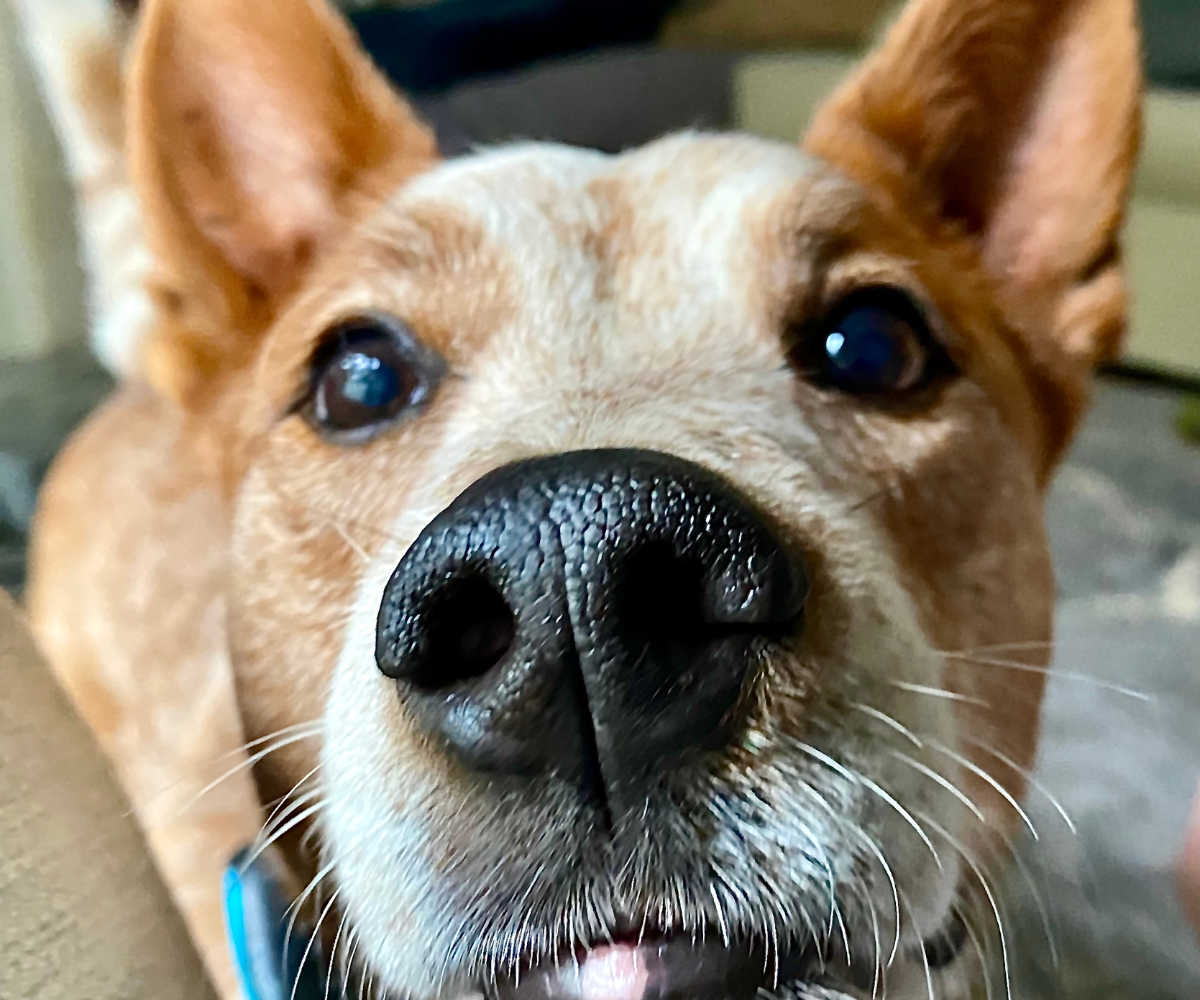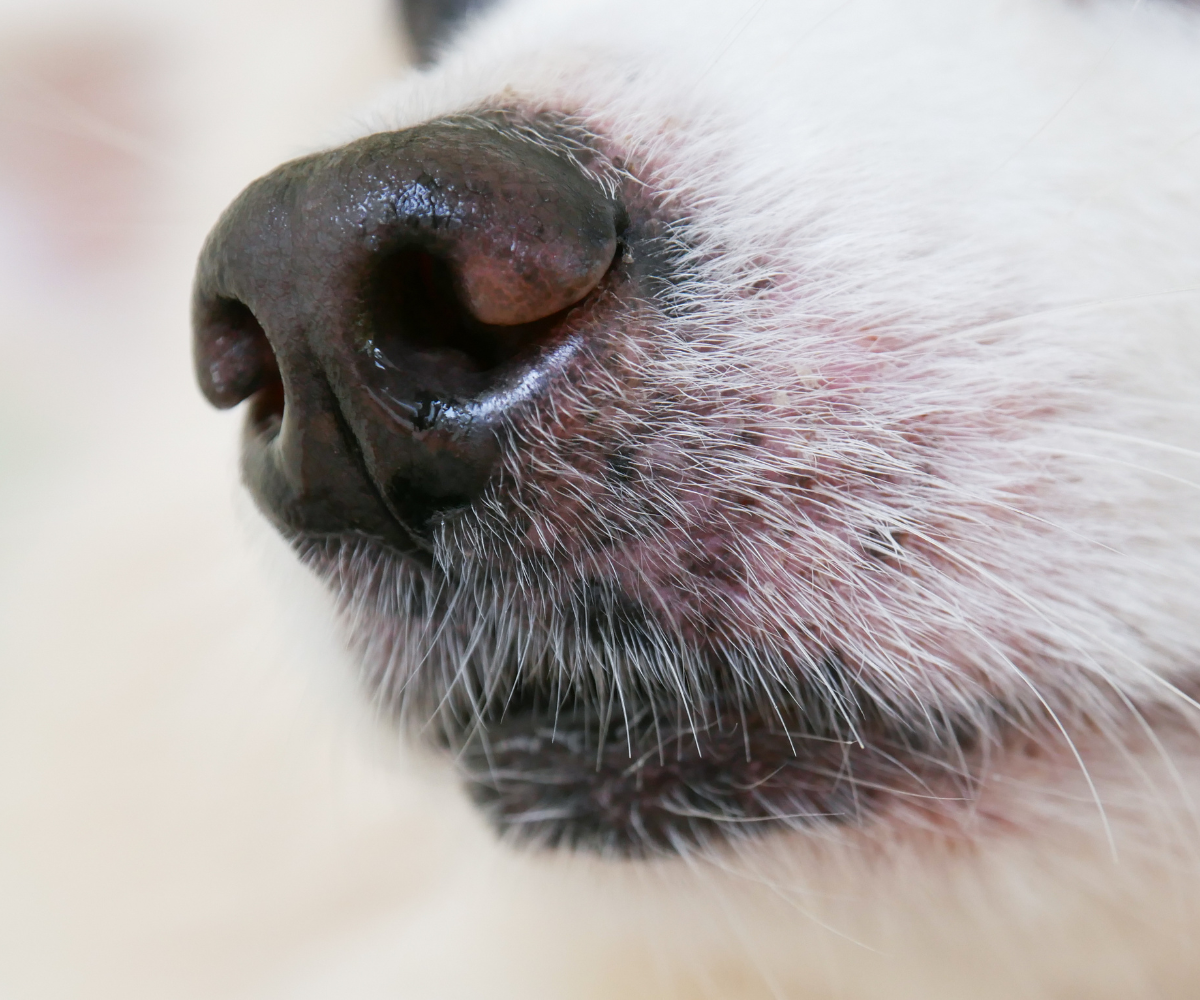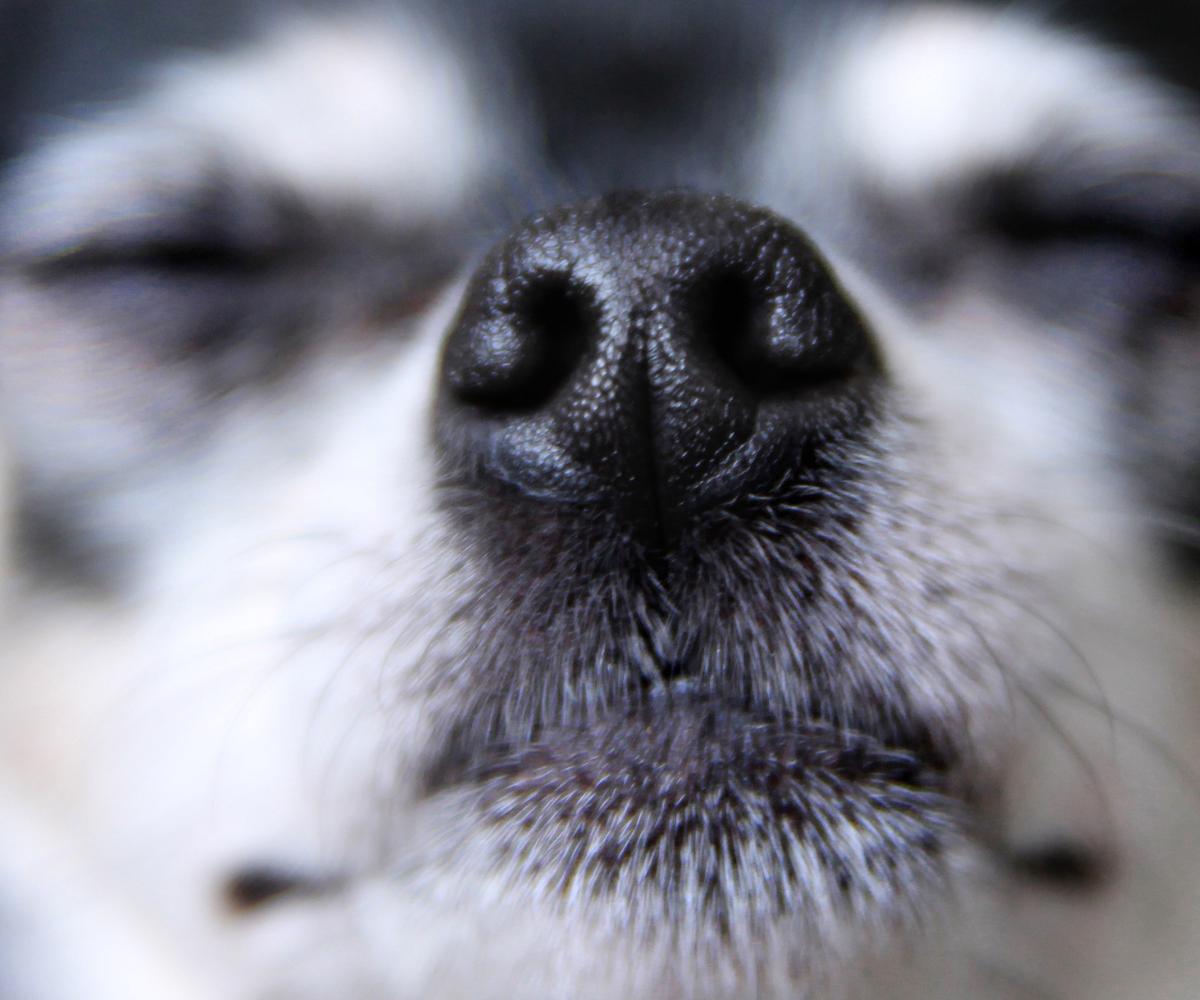Why Do My Dog's Whiskers Fall Out? Is It Normal?
Why Do My Dog's Whiskers Fall Out? Is It Normal?

Vet Reviewed

By: Sarah Hodgson
March 7, 2024
- Posted in Dogs
Table of Contents
Whiskers, also known as vibrissae, are specialized hairs that serve a variety of functions for dogs. They are highly sensitive and help dogs navigate their environment by detecting changes in air currents and vibrations. But what happens when they fall out, is it normal? Should you be worried?
In this article, we'll dive into exactly why they fall out and what to do about them falling out.
Let's dive in!
There are several reasons why a dog's whiskers may fall out. The most common reasons include natural shedding, grooming habits, and underlying health issues. Understanding the causes of whisker loss can help dog owners determine whether or not their pet's shedding is normal or requires veterinary attention.
What are Dog Whiskers?
Dog whiskers, also known as vibrissae, are specialized hairs that grow in specific locations on a dog's face and other parts of their body. These hairs are longer, thicker, and stiffer than regular fur and are deeply rooted in the skin.
Dog whiskers are highly sensitive and are connected to nerve cells that send signals to the dog's brain. They serve as a sensory organ, helping dogs to navigate their environment and sense objects around them.
Dog whiskers are not just for show. They serve an important purpose in a dog's life. They help dogs to detect changes in their environment, such as changes in wind direction or temperature. They also help dogs to determine the size and shape of objects around them, which is important for spatial awareness.
Why Do Whiskers Fall Out?
Whiskers are an essential sensory tool for dogs. They help them to navigate their environment, communicate with other dogs, and detect potential dangers. But why do they fall out? Some of the main reasons include:
1. Natural Shedding
Just like human hair, dog whiskers go through a natural growth and shedding cycle. New whiskers grow to replace the old ones, which eventually fall out. This process is entirely normal and nothing to worry about.
2. Aging
As dogs age, their bodies undergo various changes, including changes to their hair and skin. Whisker loss, shedding, or breakage can be a natural part of the aging process in dogs. This is because the hair follicles that produce whiskers can become less active as dogs get older.
3. Infections
Bacterial or fungal infections of the skin can also affect whiskers. If the infection spreads to the hair follicles where whiskers grow, it can cause them to become brittle and fall out. Infections can be prevented by keeping your dog's skin clean and healthy.
4. Trauma
Trauma to the face or muzzle can also cause whiskers to fall out. This can happen if a dog gets into a fight with another animal or accidentally bumps their face on a hard object. If your dog has recently experienced trauma to their face or muzzle, it is best to consult with a veterinarian.
5. Nutritional Deficiencies
A dog's diet can also affect the health of their hair and skin. Nutritional deficiencies can cause hair loss, including whisker loss. If you suspect that your dog's diet may be lacking in essential nutrients, speak to your veterinarian about dietary changes or supplements.

Is It Normal For Whiskers To Fall Out?
It is normal for a dog's whiskers to fall out naturally over time. Just like regular fur, whiskers have a growth cycle that involves shedding and regrowth. However, if a dog's whiskers are falling out in large quantities or seem to be breaking easily, it may be a sign of an underlying health issue.
It is important to note that dog owners should never trim or pluck their dog's whiskers. Doing so can cause discomfort and disorientation for the dog, as whiskers play an important role in a dog's sense of touch and spatial awareness.
The Factors Influencing Whisker Shedding
Whisker shedding is a natural process in dogs, but sometimes it can be a sign of an underlying health issue. Here are some factors that can influence whisker shedding in dogs:
1. Genetics
Just like humans, dogs inherit certain traits from their parents, including the thickness and length of their whiskers. Some breeds are more prone to whisker shedding than others, and this can be due to their genetics.
2. Age
As dogs age, their whiskers may become weaker and more brittle, causing them to fall out more easily. This is a natural part of the aging process and is nothing to worry about.
3. Nutrition
A dog's diet can also affect the health of their whiskers. A diet lacking in essential nutrients can lead to weaker and more brittle whiskers, which can cause them to fall out more easily.
4. Stress
Stress can also be a factor in whisker shedding in dogs. If a dog is experiencing a lot of stress, such as from a change in environment or routine, their whiskers may shed more than usual.
5. Infections
Bacterial or fungal infections of the skin can also affect whiskers. If the infection spreads to the hair follicles where whiskers grow, it can cause them to become brittle and fall out.
It's important to note that occasional whisker loss is normal, but excessive shedding may be a sign of an underlying health issue and should be addressed by a veterinarian.
Health-Related Causes of Whisker Loss
Whiskers are an essential part of a dog's sensory system, and their loss can be an indication of an underlying health issue. Here are some health-related causes of whisker loss in dogs:
Skin Conditions
Dogs can develop bacterial or fungal infections of the skin that can affect whiskers. If the infection spreads to the hair follicles where whiskers grow, it can cause them to become brittle and fall out. Skin allergies can also cause hair loss, including whiskers. Dogs with skin allergies may scratch or bite their skin, which can damage their whiskers and cause them to fall out. In some cases, skin conditions such as mange can also lead to whisker loss.
Hormonal Imbalances
Hormonal imbalances can also cause whisker loss in dogs. Hypothyroidism, for example, can cause hair loss and brittle hair. If the hair follicles where whiskers grow are affected, it can lead to whisker loss. Cushing's disease, which is caused by an overproduction of cortisol, can also cause hair loss, including whiskers.
Nutritional Deficiencies
Nutritional deficiencies can also lead to whisker loss in dogs. A lack of essential nutrients such as biotin, vitamin E, and zinc can cause hair loss, including whiskers. If a dog's diet is deficient in these nutrients, it can lead to brittle and weak whiskers that fall out easily. Feeding a balanced and nutritious diet that includes all the essential nutrients can help prevent whisker loss due to nutritional deficiencies.

How to Care for Your Dog's Whiskers
Here are some tips on how to care for your dog's whiskers:
1. Keep Them Clean
Dogs' whiskers can collect dirt, dust, and debris, which can lead to infections. It is essential to keep them clean by wiping them with a damp cloth regularly. Avoid using harsh chemicals or soap, as it can irritate your dog's skin.
2. Don't Trim Them
Whiskers are sensitive, and trimming them can cause pain and discomfort to your dog. It is essential to let them grow naturally. Trimming them can also affect your dog's ability to sense their surroundings, which can lead to accidents.
3. Avoid Touching Them
Whiskers are sensitive, and touching them can cause pain and discomfort to your dog. It is essential to avoid touching them or pulling them. If you notice any changes in your dog's whiskers, such as falling out or breaking, it is best to consult a veterinarian.
4. Provide a Balanced Diet
A balanced diet is essential for your dog's overall health, including their whiskers. A diet rich in nutrients such as protein, vitamins, and minerals can help keep their whiskers healthy and strong.
5. Regular Check-Ups
Regular check-ups with a veterinarian can help ensure your dog's overall health, including their whiskers. If you notice any changes in your dog's whiskers, such as falling out or breaking, it is best to consult a veterinarian. They can provide you with the necessary information and treatment to keep your dog's whiskers healthy.
When to Consult a Veterinarian
While some degree of whisker loss is normal in dogs, excessive or abnormal loss may indicate an underlying health issue. In such cases, it is important to consult a veterinarian for proper diagnosis and treatment.
Signs of Abnormal Whisker Loss
If you notice any of the following signs of abnormal whisker loss, it may be time to consult a veterinarian:
- Sudden or excessive loss of whiskers
- Whiskers that break easily or appear brittle
- Bald patches or areas of thinning hair around the muzzle or face
- Inflamed or irritated skin around the whiskers
- Changes in behavior, such as increased scratching or rubbing of the face
Diagnosing Underlying Conditions
A veterinarian will conduct a thorough physical examination of your dog, including a close inspection of the affected whiskers and surrounding skin. They may also recommend additional tests, such as blood work or skin scrapings, to help identify any underlying health issues.
Some of the underlying conditions that can cause abnormal whisker loss in dogs include:
- Skin infections, such as bacterial or fungal infections
- Allergies, which can cause skin irritation and hair loss
- Hormonal imbalances, such as hypothyroidism or Cushing's disease
- Autoimmune disorders, which can cause inflammation and hair loss
- Trauma or injury to the whiskers or surrounding skin
The Bottom Line
So there you have it, while it is normal for dogs to lose whiskers occasionally, excessive or sudden loss of whiskers can be a cause for concern and should be evaluated by a veterinarian. Pet owners can take steps to promote healthy hair growth and prevent excessive whisker loss through regular grooming and a healthy diet.
Frequently Asked Questions
How frequently do dogs naturally shed their whiskers?
Dogs naturally shed their whiskers just like they shed their fur. Whiskers have a growth cycle and can fall out when they reach the end of it. The frequency of shedding varies from dog to dog, but it is generally not a cause for concern.
Can the loss of whiskers indicate aging in dogs?
As dogs age, they may start to lose their whiskers. However, this is not always the case, and the loss of whiskers alone is not a reliable indicator of aging. Other factors, such as changes in behavior or physical appearance, should be considered when assessing a dog's age.
What might cause a dog to lose whiskers on one side of its face?
If a dog is losing whiskers on one side of its face, it could be due to an injury or infection in that area. It is important to monitor the dog for any other symptoms and consult a veterinarian if necessary.
If a dog's whiskers are cut or pulled out, will they regrow?
Yes, a dog's whiskers will regrow if they are cut or pulled out. However, it may take several weeks or months for them to fully regrow. It is important to avoid cutting or pulling a dog's whiskers as they are an important sensory tool for the dog.

Subscribe to Petfluence!
Get updates on the latest posts and more from Petfluence straight to your inbox.